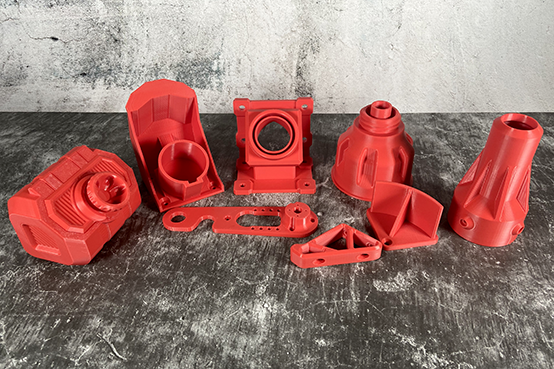
PCTG
belongs to the same family of polyesters as the increasingly popular PET-G. Compared to its more popular counterpart, PCTG offers increased impact strength, temperature resistance and clarity, making it an excellent alternative to PET-G. This filament does not require a heated chamber, which makes it ideal for use with home printers. It ensures high dimensional stability, while low shrinkage prevents the model from cracking. This makes it an easy-to-print material, even for people without a lot of experience in 3D printing.
PCTG is characterized by a much higher impact strength compared to similar materials (e.g., PET-G). It achieves results in the region of 90 kJ/m2 (PET-G: 5-8 kJ/m2) in the Izod test (notched sample). PCTG also withstands higher temperatures (up to 76°C).
Fiberlogy PCTG is recyclable and approved for contact with food *. The material is BPA free.
* Applies to the Pure TR version
3D Printing Applications
- INDUSTRY: spare parts, short series, utility models
- AUTOMOTIVE: elements in the engine compartment, housing of vehicle components, air intakes, fluid funnels
- SPORT: accessories, pads, airsoft elements
Properties
- high impact strength (up to twenty times greater than PET-G)
- high chemical resistance
- high optical transparency
- easy to print – dimensional stability and low shrinkage
- suitable for contact with food – BPA free
How to Print
The following parameters are only suggested print settings for this material. To ensure the best print quality, it is necessary to choose the appropriate settings for a specific printer and printing conditions.
| Nozzle Temperature | 250-270°C |
| Bed Temperature | 90-110°C |
| Closed chamber | not required |
| Fan | |
| Flowrate | |
| Printing Speed | < 100 mm/s |
| Surface | masking tape, PVA glue, hairspray |
| Retraction (direct) | 1-2 mm |
| Retraction (bowden) | 4-6 mm |
| Retraction Speed | 20-45 mm/s |
| Drying conditions | 60°C / 4h |
| Notes | Due to the strong adhesion to the bed, it is not recommended to print directly on its surface or on glass. This can lead to damage. We recommend using a masking tape. |
You can find this outstanding filament on our webstore

